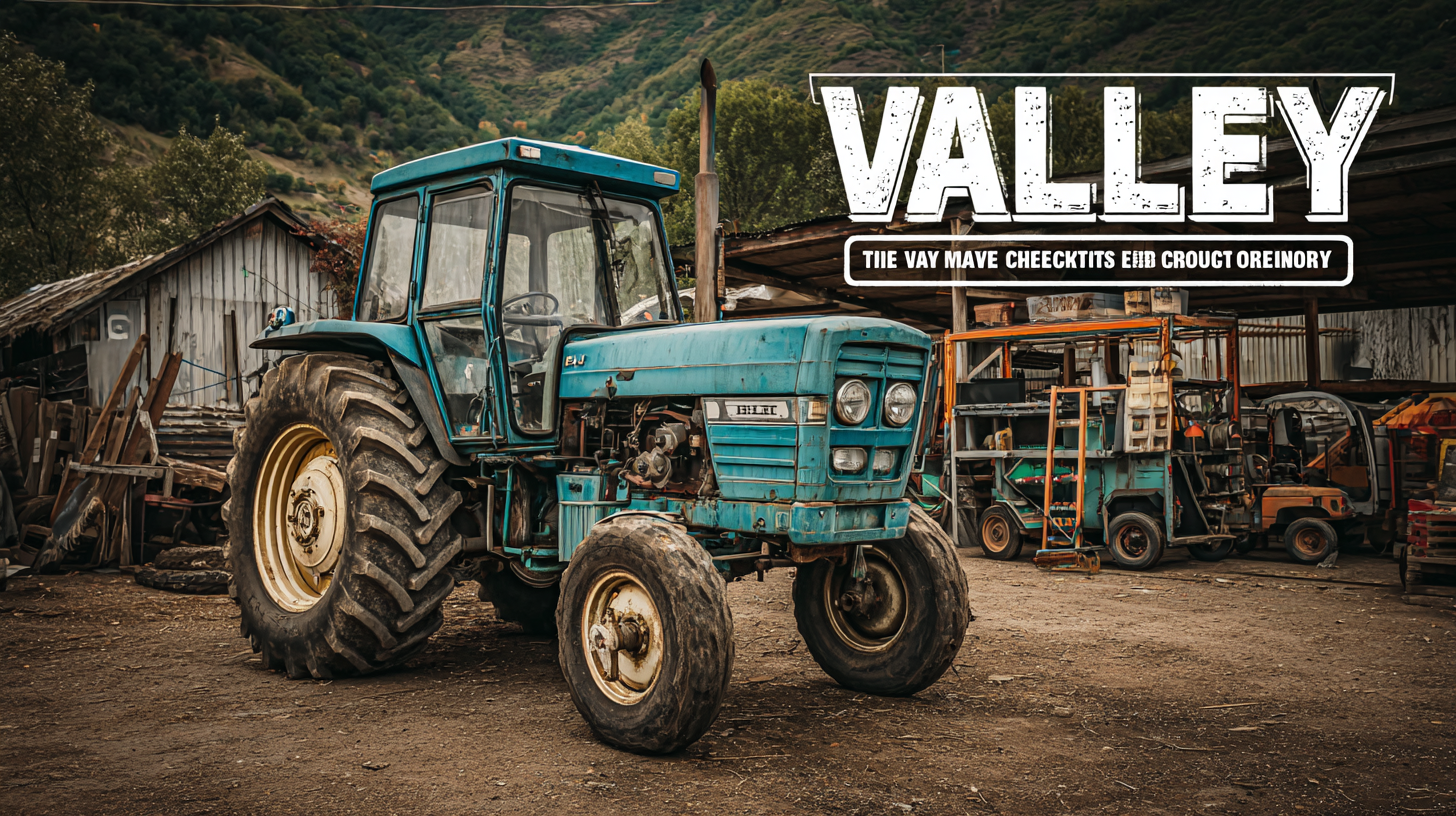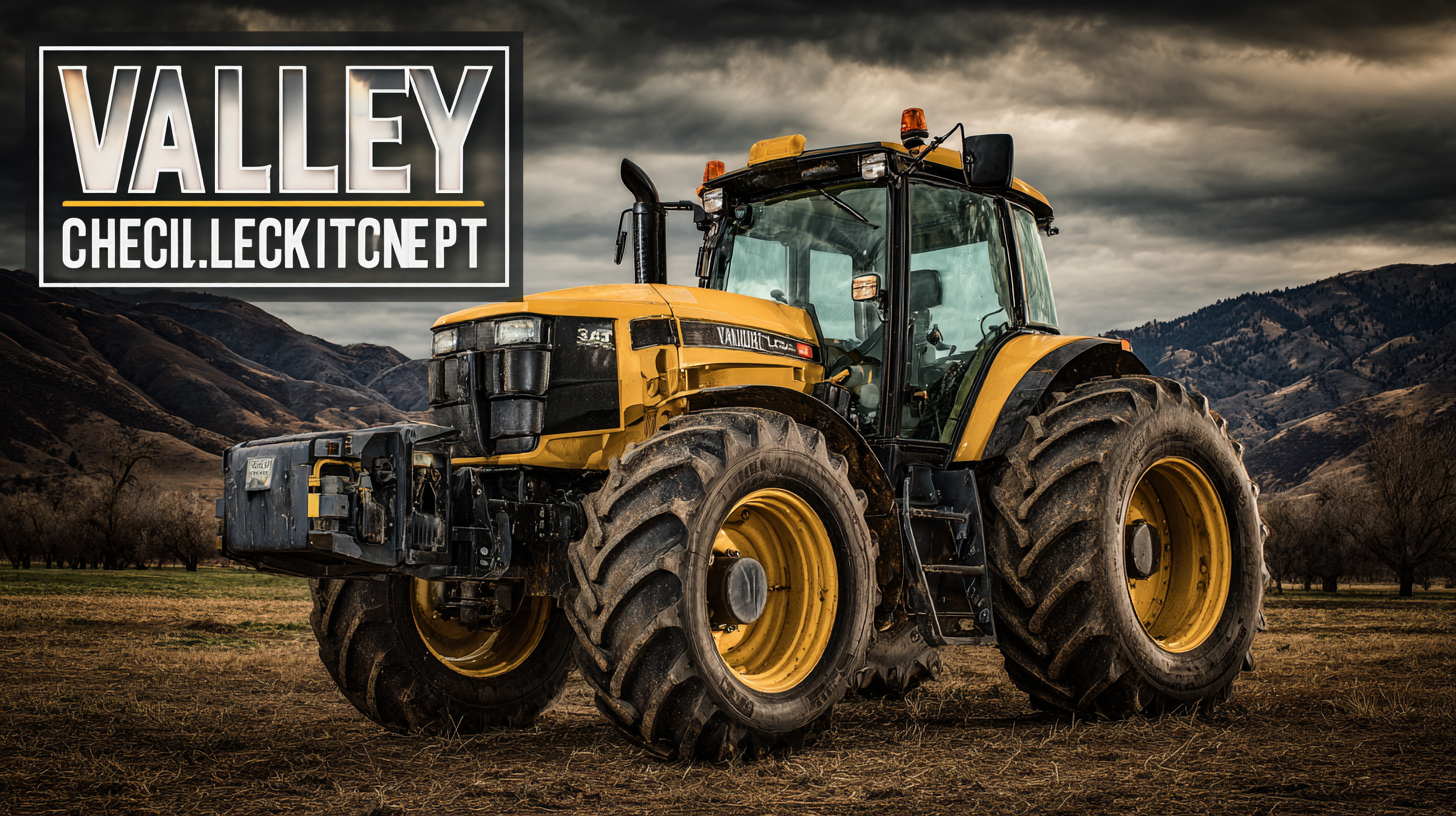In the ever-evolving landscape of agricultural machinery, sourcing the best valley tractors and equipment has become a strategic imperative for farmers and agricultural businesses worldwide. According to a recent report from the International Agricultural Machinery Association, the global market for agricultural equipment is projected to reach USD 200 billion by 2025, emphasizing the critical role of high-quality machinery in enhancing productivity and sustainability. With a multitude of options available, navigating the procurement process can be daunting. This ultimate checklist aims to streamline the decision-making process, ensuring that you select valley tractors and equipment that not only meet your operational needs but also contribute to long-term efficiency and profitability. As the demand for advanced agricultural technologies increases, having a well-structured approach to sourcing equipment is more essential than ever for modern farmers looking to thrive in a competitive environment.

When sourcing valley tractors and equipment, it’s crucial to identify key features that ensure quality and performance. First, consider the engine power and efficiency. A high-quality tractor should have a robust engine that offers both strength and fuel economy. Look for specifications that detail horsepower and torque, as these metrics directly impact the tractor's ability to handle various tasks, from plowing to hauling heavy loads.
Another essential feature is the build quality and materials used in construction. Durable frames and components can withstand the rigors of daily agricultural work, contributing to longevity and reduced maintenance costs. Features like corrosion-resistant coatings and high-quality tires are indicators of a well-constructed machine. Additionally, ergonomics and user-friendly controls are vital for operator comfort, enhancing productivity during long working hours. By focusing on these key attributes, you can confidently choose the best valley tractors and equipment tailored to your agricultural needs.
When it comes to sourcing the best Valley tractors and equipment, understanding the manufacturing process of top Chinese factories is crucial. China's manufacturing landscape is diverse, with companies employing various technologies and production techniques. To truly appreciate the capabilities of these factories, one must delve into their operations, from the initial design phase to the rigorous quality controls during production.
Top factories in China prioritize efficiency and innovation, utilizing advanced machinery and automated processes to produce high-quality equipment. They often implement lean manufacturing principles, reducing waste and optimizing workflows. Additionally, many of these manufacturers invest in research and development, ensuring they stay competitive in the global market. For businesses looking to source equipment, partnering with such factories not only guarantees robust machinery but also fosters innovation and adaptability in meeting global demands. Understanding this process provides valuable insights for businesses, helping them select the right suppliers and ensuring a reliable supply chain.

When sourcing Valley tractors and equipment, evaluating performance and durability should be at the forefront of your selection process. The right equipment can significantly enhance productivity, reduce operational costs, and withstand challenging conditions. Look for machines with reliable performance records and endorsements from farmers. Utilizing third-party reviews or testimonials can also provide valuable insights into the experiences of other users.
Tip: Before making a purchase, consider conducting a field test. Spend time operating the equipment to assess its functionality, ease of use, and comfort. This hands-on experience can be pivotal in understanding how the tractor adheres to your specific needs and tasks.
Durability is another critical factor in your decision-making process. Equipment that is built to last will often save money in the long run by reducing repair costs and downtime. Investigate the materials used in the construction of the tractors and equipment, as well as the manufacturer's warranty. A longer warranty often reflects the confidence a manufacturer has in the durability of their product.
Tip: Pay attention to maintenance requirements and whether the equipment is equipped with easily replaceable parts. This will not only ensure longevity but also facilitate any repairs and servicing you may need in the future.
In today's rapidly evolving agricultural landscape, global sourcing strategies for machinery play a crucial role in addressing the increasing demand for food production. With the world population projected to exceed 8.5 billion by 2030, efficient agricultural practices are imperative. Countries worldwide are adopting smart agriculture solutions, leveraging advanced digital infrastructure and technological innovations to streamline operations and enhance productivity.
Chinese manufacturers are leading the charge by collaborating closely with international suppliers, driving a transformation within the agricultural machinery sector. This collaboration is not only enhancing the quality and intelligence of agricultural equipment but also aims to position the industry at the forefront of global standards. As countries like China strengthen their supply chains and embrace innovative technologies, they are setting benchmarks for higher efficiency and sustainability in agriculture, crucial for combating future food supply challenges.
Events like the international machinery expos have become pivotal in showcasing cutting-edge agricultural technologies and fostering global partnerships. These platforms contribute significantly to enhancing visibility and accessibility for superior equipment, paving the way for improved agricultural practices around the globe.
Building strong relationships with Chinese equipment manufacturers is crucial for sourcing the best valley tractors and equipment. One effective tip is to prioritize communication. Establishing open lines of dialogue not only helps clarify expectations but also fosters trust. Regular updates and feedback on production timelines and quality can enhance collaboration and minimize misunderstandings. Utilizing platforms like WeChat or video conferencing tools can facilitate this process, ensuring that you're always in sync with your manufacturer’s activities.
Another important strategy is to visit manufacturing facilities in person. While virtual communication is valuable, nothing compares to the insights gained from seeing operations firsthand. This visit allows you to assess the quality of equipment and materials used, ensuring they meet your standards. It also opens opportunities for face-to-face discussions on customizations or specific equipment needs. Building rapport through personal interaction can significantly strengthen your partnership and ensure a smoother sourcing experience.
Finally, consider attending industry trade shows in China. These events provide excellent opportunities to meet multiple manufacturers, understand market trends, and negotiate better deals. Networking with experts and peers can lead to valuable recommendations and partnerships. By being proactive and engaged, you can develop fruitful relationships that enhance your sourcing efforts worldwide.
